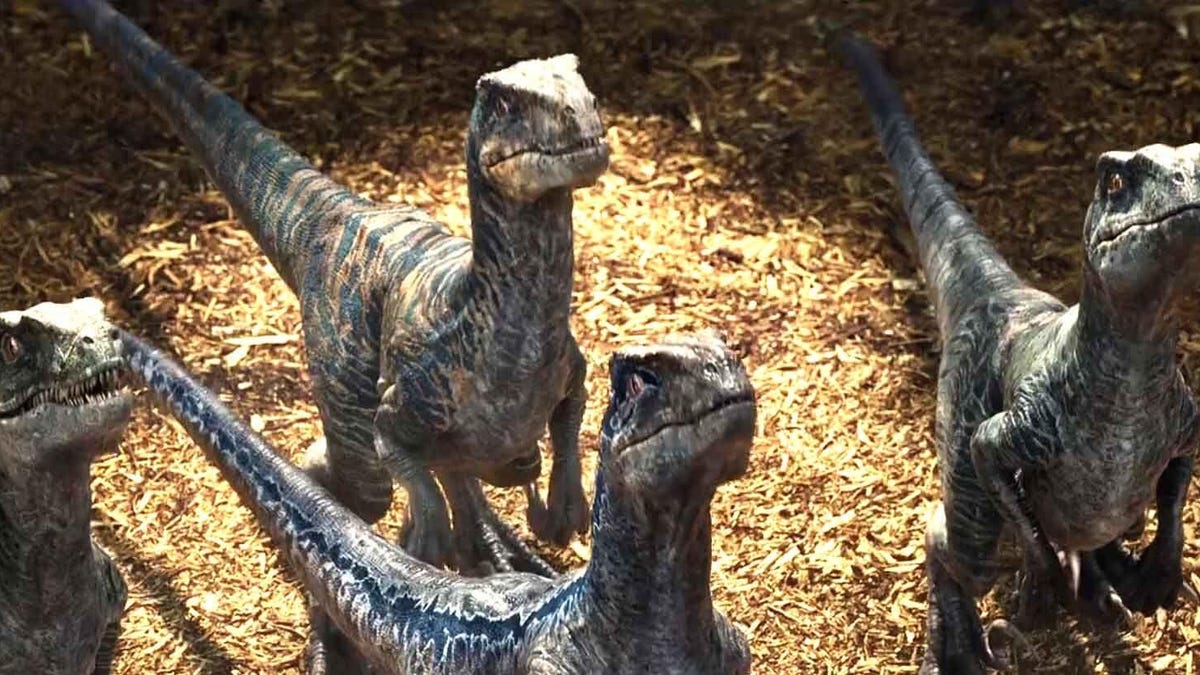These speedy dinosaurs could have kept pace with the fastest human
Ancient footprints show it's good there were no Olympics (or humans) in the Early Cretaceous.

These Jurassic World theropods are ready to race... like their real-world prehistoric counterparts were.
If one of the speediest known dinosaurs were to race champion sprinter Usain Bolt on his best day, it might be a photo finish. New research analyzed fossilized footprints from theropods, a group of two-legged predatory dinosaurs that includes velociraptors, and found the extinct lizards could reach speeds just shy of 28 miles per hour (45 kilometers per hour) while running.
This also happens to be almost exactly the same top speed of Bolt's record-setting 100-meter run in the 2009 World Championships. However, researchers say the speedy dino's tracks showed abrupt speed changes, suggesting the creature was maneuvering as it ran. This raises the question of whether it would be able to easily outpace Bolt if it were running in a straight line next to him on a track.
All this is based on a new study of two sets of fossilized theropod tracks in Spain conducted by a team of Spanish and Argentinian researchers and published in the latest issue of Scientific Reports. The two trackways, known as La Torre 6B and La Torre 6A-14, consist of preserved prints from the Early Cretaceous period over 100 million years ago.
Preliminary measurements taken on one of the footprints of La Torre during fieldwork.
"The speeds calculated for both trackways from La Torre are among the top three speeds ever calculated for non-avian theropod tracks," the study concludes, with the authors adding that it's impossible to determine exactly which species made the tracks.
Two sets of dinosaur tracks believed to be made by animals moving even faster have been reported in Utah and Texas, with the fastest hitting 30.6 miles per hour (49 kilometers per hour). Those tracks are also thought to have come from theropods.
Interestingly, the fastest of the two tracks at La Torre is also the set of prints that indicates a "maneuvering dinosaur," suggesting a particularly agile and speedy animal. It's also estimated to have been smaller than the slower dinosaur that made the other set of prints.
All this suggests that even the fastest humans we have ever known would be hard pressed to outrun what might have just been average theropods. Yet another reason to be thankful for that long-ago asteroid that ended the age of the thunder lizards.

